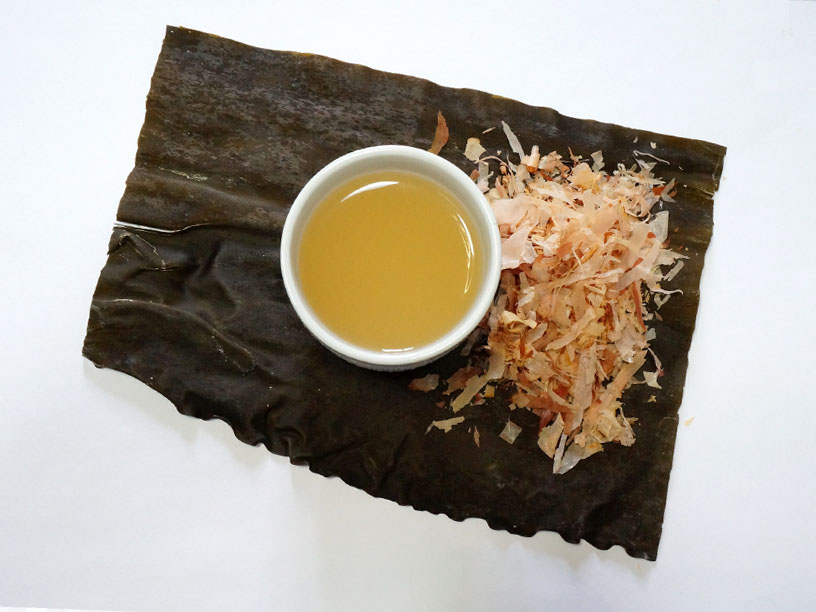Sorry for my unannounced hiatus… we’ve had our hands full in the joys of new home ownership! What started off as a quick move in quickly turned into a major renovation, living in a construction zone for several weeks! Such a headache, but definitely worth it! We didn’t get to the kitchen yet, but we’re saving the best for last. For now, I have a new kitchen, a new camera, and I’m ready to finally get back to cooking!!
So to continue with my posts, last but not least in my dashi series, awase dashi, or the most common dashi used in Japanese cooking. I recently shared my method of making kombu dashi at home, and while it’s a great choice for vegetarians and vegans, it’s not as full of that savory umami flavor, since there are less savory ingredients used to make it!
While dashi can refer to any stock, if it’s not specified, the dashi is almost always awase dashi, which is a fish flavored stock. Now before you go making any judgements about fishy broth, you’ve probably already tasted it without knowing it. Ever had miso soup? If you have, chances are you’ve already tasted dashi!
To make awase dashi, you’ll need two ingredients, kombu, which we’ve used previously, and katsuobushi, or the shavings from fermented, dried, smoked tuna. Since these ingredients are harder to come by for me, I always feel a little hesitant to make dashi from scratch because I want to save my supplies, and I usually stick to the instant dashi granules… not as good, but a really close substitute!
But good news! One of the great things about Japanese cooking is the emphasis on making the most of what you have: in this recipe, we will be making ichiban dashi, or “first dashi”, which is made from fresh ingredients. Since it’s fresh, it’s fullest in flavor, and best used in dishes where you want to maximize umami flavor, like in soups and sauces. Once you’ve made dashi, you can save the ingredients to make it again, which is called niban dashi, or “second dashi”. Since the ingredients have been used once, there is a little less flavor, so it’s best used for dishes where there are other ingredients adding to the umami flavor, like stews. And after you’ve made niban dashi, you can set aside the ingredients to make your own homemade furikake, or rice seasoning, to further stretch your supplies!
And as another note, one of my biggest gripes between recipes in different countries is the conversion from grams to cups, and with bonito it’s no exception. Most recipes call for it in grams, but if you are on a different measuring system, it can be frustrating! So I like to buy bonito in individual packs so it makes the process a little bit easier. The package below comes with five 2.5 gram bags, so all you need to do is open two bags and you’re good to go! But if all you can find is a big bag of loose bonito, 5 grams is going to be about half a cup. And of course, if you want more intense flavor, just add more bonito!
For other dashi recipes, see my Shitake Kombu Dashi and Kombu Dashi.
Recipe – Awase Dashi:
– Take your strip of kombu and gently wipe it clean. You’ll notice little white flakes on it: don’t wipe it off, they are called “mannitto” or “umami seibun”, and occur naturally as part of the drying process. They are basically salt deposits, so it helps contribute to the flavor!
– Soak the kombu in water for at least 2 hours, preferably overnight, to help release the flavor in the kombu.
– When you are ready to make dashi, add the kombu and water into a medium pot, then bring to a simmer over medium heat for ten minutes.

– After ten minutes, add the bonito flakes and remove from heat.
– Let it steep for about two minutes, until you see the bonito flakes settle at the bottom of the pan.
– Carefully pour the dashi into your lined strainer.
– Gently tap the katsuobushi to remove excess water, then set it aside for another use! Your dashi is now ready to use!







Discuss and Share